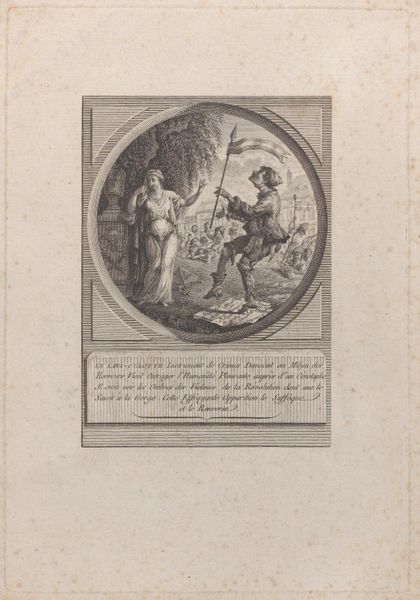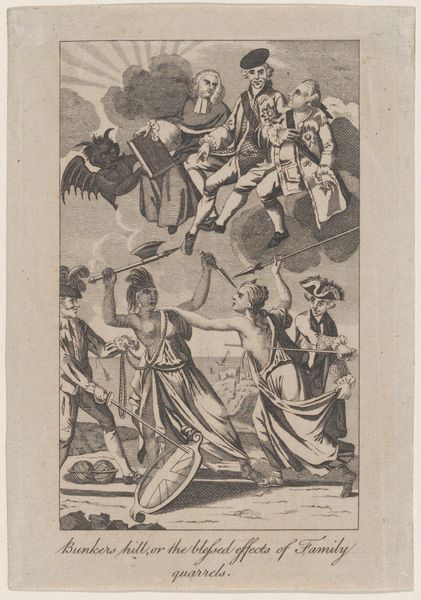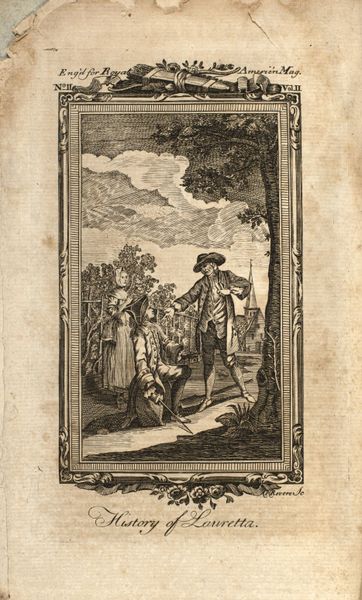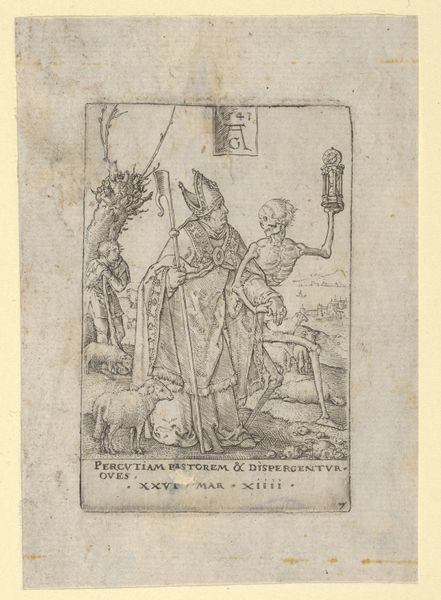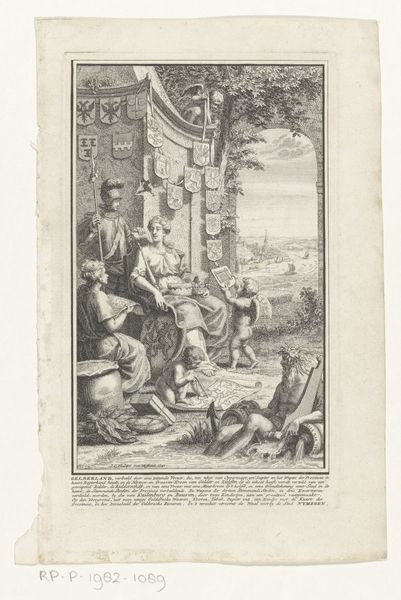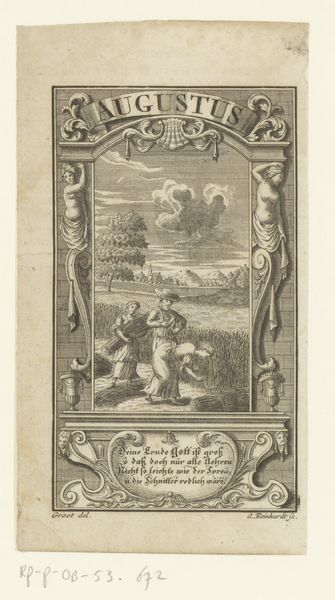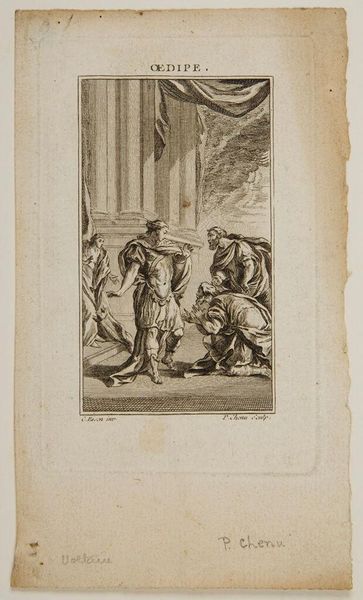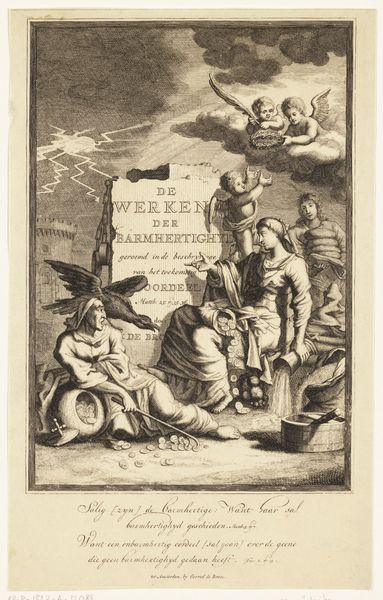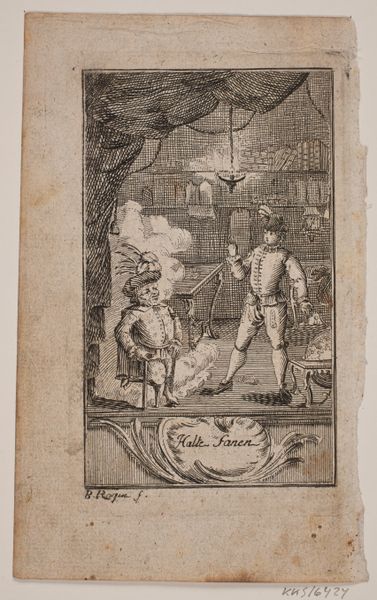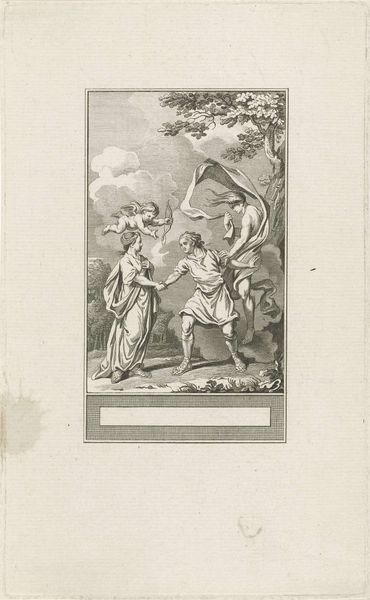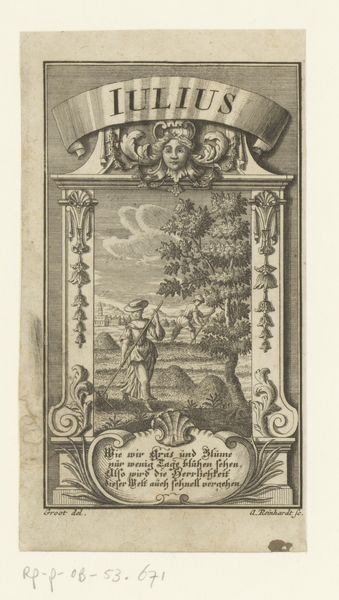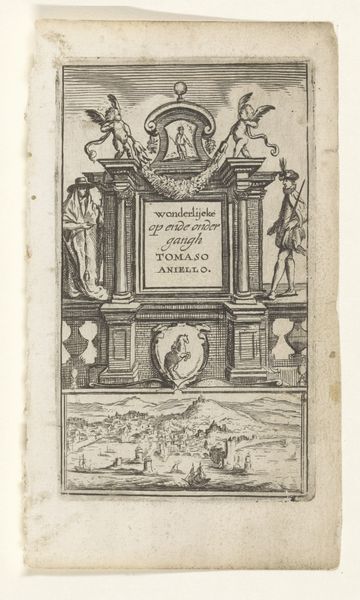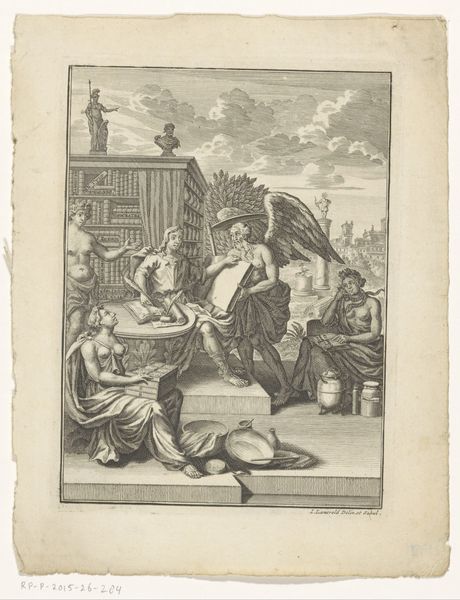
Copyright: Public domain
Curator: Looking at this Baroque print, titled “Mme Clairon,” created in 1774 by Paul Revere, what’s your immediate reaction? Editor: It feels...staged. There’s a distinct separation between the foreground figures and the classical landscape behind them. Almost like a theatrical set piece. Curator: That's insightful. It certainly evokes theatricality, given Anne-Françoise Dangeville, known as "Mme Clairon," was a celebrated actress of the Comédie-Française. Revere made this engraving after a larger portrait commemorating one of her iconic roles. Editor: The artist definitely prioritized clarity and idealized forms. The figures, even the Cupid hovering near the hilltop temple, lack the dynamism that often characterizes Baroque art. It feels more restrained. Note the use of line. Look how descriptive it is and how it models form. Curator: The neoclassical influence is indeed becoming prevalent at this time. It is a memorial to a persona constructed through and for the public, but a certain formality of display still resonates through Baroque style. Considering this was printed during the rise of revolutionary sentiment in the American colonies, and Revere’s own involvement in revolutionary politics, what do you think the image itself attempts to represent? Editor: Perhaps the restraint signals a shift towards order and reason? There's definitely an emphasis on allegory, as opposed to raw emotion. One figure, perhaps representing fame, crowns the seated Clairon as Cupid hovers, overseeing this deification. Curator: This engraving showcases the pervasive influence of French culture and its actors even in pre-revolutionary America. Revere was clearly aiming to appeal to a certain elite, referencing shared cultural touchstones that signaled refinement and learning, even if that refinement sat at odds with nascent ideas of democratic equality. Editor: So, on the one hand, it's a portrait, but also an ideological symbol negotiating aesthetic styles with budding political tensions. Quite a dense layering of information encoded in a fairly small image! Curator: Precisely, a potent distillation of an era's complexities. It really encapsulates the dialogue between old and new shaping societal tastes and public personas during that era. Editor: Indeed, much more than initially meets the eye. Thanks for shedding some light on the history surrounding it.
Comments
No comments
Be the first to comment and join the conversation on the ultimate creative platform.
